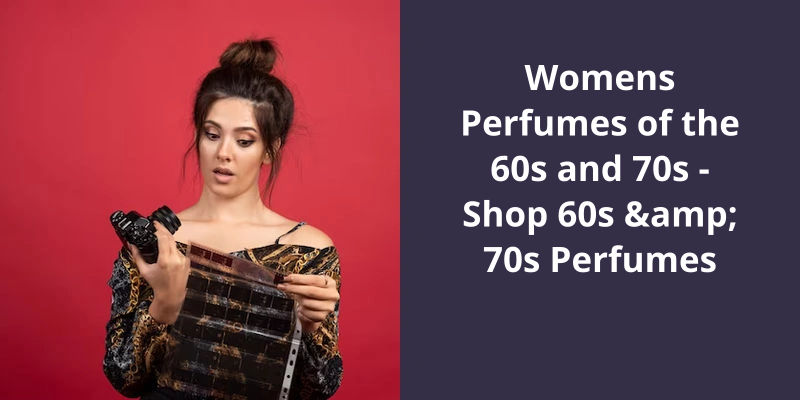The percentage of Galaxolide typically found in perfume can vary widely depending on the specific fragrance, as the compound is used to add a musky scent. However, on average, it’s often used in concentrations of about 10% to 30%. But mostly, the concentration stays below 20%. It’s important to note that these percentages could change based on the other ingredients in the perfume and the desired final smell. Thus, while Galaxolide is a common component, the exact percentage used in any given perfume might differ significantly.

What Does Galaxolide Do in Perfume?
Galaxolide, a synthetic musk compound, plays a significant role in the creation of perfumes and colognes. This versatile ingredient was first developed in 1965 and gained popularity in the late 1960s when it was used in fabric softeners, detergents, and high-quality fragrances. It’s musk scent is highly valued in the fragrance industry due to it’s ability to add depth and longevity to scent compositions.
It helps slow down the evaporation of the more volatile top and heart notes, allowing the scent to linger on the skin for an extended period. This fixative property is particularly crucial for perfumes that are designed to have a long-lasting effect.
It’s worth noting that the percentage of Galaxolide typically found in perfumes varies depending on the desired scent profile and the intended market. Such variations enable perfumers to tailor the fragrances character according to their creative vision.
It acts as a fixative, extending the longevity of fragrances by slowing down the evaporation of more volatile notes. It’s safety profile adds to it’s appeal, making it a popular choice for perfumers aiming to create alluring and long-lasting scent experiences.
The History and Development of Galaxolide in the Fragrance Industry
- Galaxolide is a synthetic musk commonly used in the fragrance industry.
- It was first introduced in the 1960s and quickly gained popularity among perfume manufacturers.
- Galaxolide is known for it’s long-lasting and versatile scent, making it a popular choice for a wide range of fragrance products.
- Over the years, Galaxolide has undergone various advancements and modifications to improve it’s performance and comply with regulatory standards.
- It’s development has focused on enhancing it’s stability, odor profile, and environmental impact.
- The fragrance industry heavily relies on Galaxolide as a key ingredient in many perfumes, body lotions, soaps, and other scented products.
- Galaxolide’s use isn’t limited to perfumery but also extends to household cleaning products and air fresheners.
- It’s enduring popularity can be attributed to it’s ability to create a pleasant, long-lasting scent that can evoke various emotions and memories.
- The history and development of Galaxolide reflect the ongoing quest for innovative fragrance ingredients that can meet both consumer demands and regulatory requirements.
Galaxolide, an organic heterotricyclic compound, is derived from 1,3,4,6,7,8-hexahydrocyclopenta[g]isochromene and is substituted by multiple methyl groups. This synthetic musk is primarily utilized as a fragrance in cosmetics, providing a pleasant scent.
What Is Galaxolide Made Of?
Galaxolide, the organic heterotricyclic compound, is known for it’s usage as a fragrance in various cosmetic products. Made from 1,3,4,6,7,8-hexahydrocyclopenta[g]isochromene, Galaxolide features methyl substitutions at positions 4, 6, 6, 7, 8, and This unique chemical structure contributes to it’s aromatic properties, making it a popular ingredient in perfumes and other scented products.
It’s molecular composition enhances it’s ability to create a lasting olfactory impression. This compound stands out for it’s stability and resistance to degradation, ensuring that the scent remains consistent over time.
When examining the typical percentage of Galaxolide found in perfumes, it can vary depending on the specific formulation and brand. However, in general, concentrations typically range between 0.1% and 3% of the perfume composition. This percentage may seem low, but it’s important to note that fragrances are a blend of various ingredients, each contributing to the overall scent profile.
The usage of Galaxolide isn’t limited to perfumes alone. It’s also utilized in other cosmetic products, such as body lotions, shower gels, and hair care items. It’s versatility as a fragrance component allows for it’s incorporation in a wide range of scented products, providing a consistent and pleasant scent experience to consumers.
Concerns surrounding the bioaccumulation and persistence of synthetic musks, including Galaxolide, have prompted regulatory bodies to impose restrictions on their use. Manufacturers must adhere to guidelines to ensure the safe and responsible use of Galaxolide in cosmetic formulations.
The environmental impact of Galaxolide, a commonly used fragrance ingredient in household products, is a growing concern for the Great Lakes region. Classified as a synthetic musk, this chemical has been found to be highly toxic to aquatic life, posing a significant threat to the delicate ecosystem of the area.
Is Galaxolide Toxic?
Galaxolide, a synthetic musk compound, is widely employed as a fragrance ingredient in various household products. However, concerns have been raised regarding it’s potential toxicity and environmental impact. Extensive studies have revealed that Galaxolide poses significant threats to aquatic life, emphasizing the urgency to address it’s pollution in the Great Lakes region.
The toxicity of this chemical can disrupt the delicate balance within these habitats, leading to adverse effects on fish, invertebrates, and other aquatic species. Furthermore, Galaxolides persistence in the environment exacerbates it’s impact, as it accumulates in the food chain and persists in water bodies for extended periods.
To mitigate the adverse effects of Galaxolide pollution, it’s crucial to implement strict regulations and monitoring practices. Additionally, public awareness campaigns could help promote responsible use of household products containing Galaxolide, thus limiting it’s potential impact on the environment.
The widespread usage of this synthetic musk in household products necessitates immediate attention and regulatory actions.
Health Effects of Galaxolide on Humans: Explore the Potential Health Risks Associated With Exposure to Galaxolide in Household Products and the Potential Effects on Human Health, Such as Allergies, Respiratory Problems, and Skin Irritation.
Galaxolide is a commonly used synthetic fragrance compound found in many household products, including perfumes. While it’s generally considered safe at low levels, high concentrations or prolonged exposure to Galaxolide can potentially have adverse health effects on humans.
Exposure to Galaxolide has been linked to allergic reactions in some individuals, leading to symptoms such as skin redness, itching, and hives. It can also trigger or worsen respiratory problems, such as asthma, in people with pre-existing conditions.
In addition, sensitive individuals may experience skin irritation or contact dermatitis when exposed to products containing Galaxolide. This can manifest as redness, dryness, or itchiness of the skin.
It’s important to note that the risk and severity of these health effects may vary depending on individual sensitivity and the concentration of Galaxolide in the product. To minimize potential risks, it’s advisable to use fragrance products in moderation and be aware of any personal allergies or sensitivities.
Source: Galaxolide – Wikipedia
Conclusion
While there’s no specific percentage universally standardized, it’s recommended to start with a 50% dilution of Galaxolide if unfamiliar with it’s characteristics. This is because the undiluted form, known as Galaxolide 100, is highly viscous and prone to polymerization.





